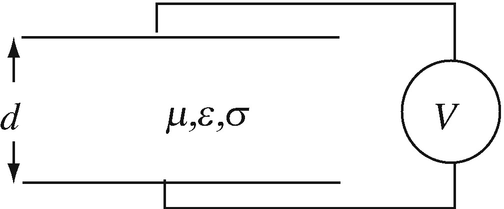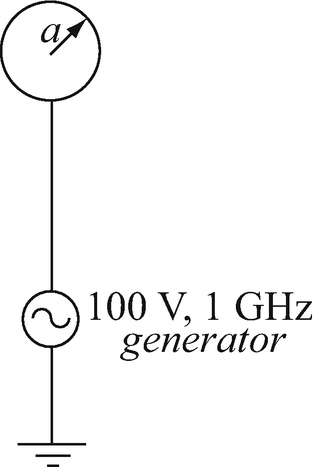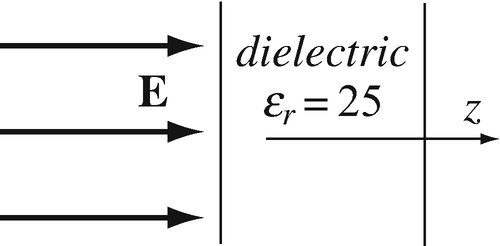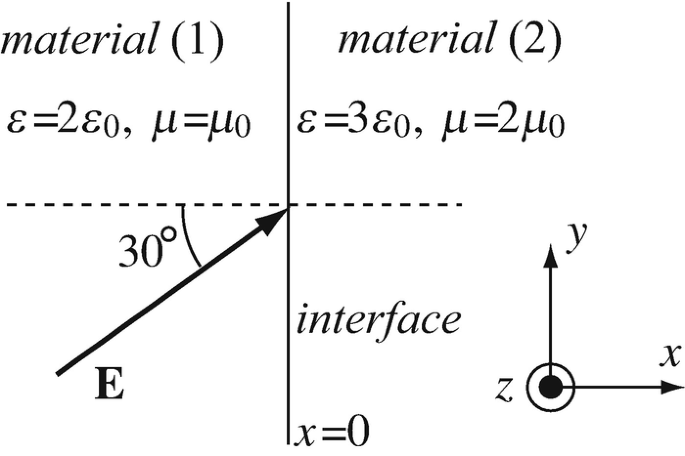Abstract
Most students in engineering and science have heard the term “Maxwell’s equations,” and some may also have heard that Maxwell’s equations “describe all electromagnetic phenomena.” However, it is not always clear what exactly do we mean by these equations. How are they any different from what we have studied in the previous chapters? We recall discussing static and time-dependent fields and, in the process, discussed many applications. To do so, we used the definitions of the curl and divergence of the electric and magnetic fields: what we called “the postulates.” Are Maxwell’s equations different? Do they add anything to the previously described phenomena? Perhaps the best question to ask is the following: Is there any other electromagnetic phenomenon that was not discussed in the previous chapters because the definitions we used were not sufficient to do so? If so, do Maxwell’s equations define these yet unknown properties of the electromagnetic field? The answer to the latter is emphatically yes.
From a long view of the history of mankind—seen from say, ten thousand years from now—there can be little doubt that the most significant event of the 19th century will be judged as Maxwell’s discovery of the laws of electrodynamics. The American civil war will pale into provincial insignificance in comparison with this important scientific event of the same decade.
Richard P. Feynman (1918–1988)
Physicist, Nobel laureate
Access this chapter
Tax calculation will be finalised at checkout
Purchases are for personal use only
Notes
- 1.
Pioneer 10 was launched on March 2, 1972, with the intention of moving out of the solar system. Designed for a mission of 21 months, it was the first spacecraft to pass through the asteroid belt and out of the solar system. The spacecraft carries a unique plaque that identifies the Earth and its inhabitants as the designers of the craft. Pioneer 10 is still flying, heading for the red star Aldebaran in the constellation Taurus where it is expected to arrive in about two million years. As of January 1, 2019, the spacecraft was 18.2 billion miles away but its power source is too weak to transmit over this distance.
- 2.
James Clerk Maxwell (1831–1879), Scottish scientist, trained as a mathematician. Between 1856 and 1860 he lectured in Aberdeen and in 1860 became Professor of Natural Philosophy and Astronomy at King’s College, London, until 1865. After that, he resigned and busied himself in writing, including on the Treatise on Electricity and Magnetism, published in 1873. Maxwell’s work was not limited to electricity and magnetism. He wrote on the theory of gases, on heat, and on such topics as light, color, color blindness, the rings of Saturn, and others. The three-color combination (red, green, and blue) used to this day in defining color processes such as television and monitor screens was invented by Maxwell in 1855. Although a modest man, he knew the value of his work and was proud of it. The publication of the Treatise on Electricity and Magnetism was a turning point in electromagnetics. It was for the first time since Oersted’s discovery of the link between electricity and magnetism that this link extended to the generation and propagation of waves. This was shown experimentally by Hertz 15 years later and opened the way to the invention of radio and the communication era.
- 3.
Oliver Heaviside (1850–1925). Oliver Heaviside was by all accounts the “enfant terrible” of electromagnetics. A brilliant man with a natural gift for mathematical analysis, he was the incarnation of antiestablishment. Heaviside dropped out of school at age 16 and at age 18 started working for the Anglo-Danish cable company. He worked for about 6 years during which he taught himself the theories of electricity and magnetism and, apparently, applied mathematics. After that, Heaviside set out to understand and explain Maxwell’s theory, and in the process, he derived the modern form of Maxwell’s equations (at about the same time Hertz did). He was one of the first to use phasors and did much to propagate the use of vector analysis. Heaviside may well be considered the developer of operational calculus and of the theory of transmission lines. Much of his work remains uncredited, a process which started in his lifetime. He was reclusive and abrasive, qualities that did not win him friends. Constant attacks on the “mathematicians of Cambridge” caused much friction, as did the fact that his papers were difficult to understand. For example, he insisted that potentials have no value. In his words, these were “Maxwell’s monsters” and should be “murdered.” Similarly, he dismissed the theory of relativity. With all his failings, quite a bit of what we study today in electromagnetics and circuits must be credited to Heaviside.
- 4.
The term displacement and displacement current were coined by Maxwell from the analogies he used. To Maxwell, flux lines were analogous to lines of flow in an incompressible fluid. Using this analogy, he called the quantity D, the electric displacement and therefore the current density produced by its time derivative, the displacement current density.
- 5.
Heinrich Rudolph Hertz (1857–1894). Hertz was trained as an engineer but had considerable interest in other areas, including mathematics and languages. At the suggestion of Herman von Helmholtz, he undertook a series of experiments which, in 1888, led to verification of Maxwell’s theory. This included proof of propagation of waves which he showed by receiving the disturbance produced by a spark with a receiver which was essentially a loop with a gap. In the process, he measured the speed of propagation and found it to be that of light. The conclusion that light itself was an electromagnetic wave was a logical extension from these experiments. At the age of 31, Hertz succeeded where others failed. In his experiments, he showed many of the properties of waves, including reflection, polarization, refraction, periodicity, resonance, and even the use of parabolic antennas. It is all the more tragic that he died only 6 years later at the age of 37. The notation we use in this book is due to Hertz (and Heaviside) rather than due to Maxwell. Unlike Maxwell, who emphasized the use of potentials, Hertz and Heaviside emphasized the use of the electric and magnetic fields.
Author information
Authors and Affiliations
Corresponding author
Problems
Problems
11.1.1 Maxwell’s Equations, Displacement Current, and Continuity
-
11.1
Displacement Current Density. A magnetic flux density, B = ŷ(0.1cos5z)cos100t [T] exists in a linear, isotropic, homogeneous material characterized by ε and μ. Find the displacement current density in the material if there are no source charges or current densities in the material.
-
11.2
Displacement Current in Spherical Capacitor. Determine the displacement current Id [A] which flows between two concentric, conducting spherical shells of radii a and b [m] where b > a in free space with a voltage difference V0sinωt [V] applied between the spheres.
-
11.3
Application: Displacement Current in Cylindrical Capacitor. A voltage source V0sinωt [V] is connected between two concentric conductive cylinders of radii r = a and r = b [m], where b > a, with length L [m]. ε = εrε0 [F/m], μ = μ0 [H/m], and σ = 0 for a < r < b. Neglect any end effects and find:
-
(a)
The displacement current density at any point a < r < b.
-
(b)
The total displacement current Id flowing between the two cylinders.
-
(a)
-
11.4
Conservation of Charge and Displacement Current. Show that the displacement current density in Maxwell’s second equation (Ampère’s law) is a direct consequence of the law of conservation of charge.
-
11.5
Application: Displacement and Conduction Current Densities in Lossy Capacitor. A lossy dielectric is located between two parallel plates which are connected to an AC source (Figure 11.5). Material properties of the dielectric are ε = 9ε0 [F/m], μ = μ0 [H/m], and σ = 4 S/m. The source is given as V = 1cosωt [V]. Calculate the frequency at which the magnitude of the displacement current density is equal to the magnitude of the conduction current density. Assume all material properties are independent of frequency.

Figure 11.5
-
11.6
Application: Displacement and Conduction Current Densities. A capacitor is made of two parallel plates with a dielectric between them. The area of each plate is A [m2] and the dielectric is d [m] thick. The dielectric is lossy with a permittivity ε [F/m] and conductivity σ [S/m]. If the capacitor is connected to a sinusoidal AC source of amplitude V [V] and angular frequency ω [rad/s]:
-
(a)
Find the ratio between the amplitudes of the conduction current density and displacement current density.
-
(b)
Show that the conduction and displacement current densities are 90° out of phase.
-
(a)
-
11.7
Application: Lossy Capacitor. The capacitor in Problem 11.6 is connected to a 12 V DC source and charged for a long period of time. Now the source is disconnected. Find the time constant of discharge of the capacitor.
-
11.8.
Application: Displacement Current. An AC generator operating at a frequency of 1 GHz is connected with a wire to a small conducting sphere of radius a = 10 mm at some distance away (see Figure 11.6). If the sphere is in free space, calculate the current in the wire. Neglect any effect the ground may have. The generator generates a sinusoidal voltage of amplitude 100 V.

Figure 11.6
-
11.9
Application: Displacement current. Two conducting spheres, each of radius a = 0.2 m are connected to an AC source of amplitude 120 V and frequency of 100 kHz as shown in Figure 11.7, separated a distance d = 10 m apart. Assume the voltage source is sinusoidal (V(t) = 120sin2πft) and free space everywhere. Calculate the current supplied by the source. Hint: think about the spheres as forming a capacitor and assume charge on the spheres at any instant in time is uniformly distributed on their surfaces.

Figure 11.7
11.1.2 Maxwell’s Equations
-
11.10
Maxwell’s Equations. An electric field intensity and a magnetic field intensity are given as follows:
$$ {\displaystyle \begin{array}{l}\mathbf{E}=\hat{\mathbf{y}}\kern-1pt 120\pi \cos \left({10}^6\pi t+\beta z\right)\kern1em \left[\mathrm{V}/\mathrm{m}\right]\\ {}\mathbf{H}=\hat{\mathbf{x}}{H}_0\cos \left({10}^6\pi t+\beta z\right)\kern1em \left[\mathrm{A}/\mathrm{m}\right]\end{array}} $$-
(a)
What values of H0 and β are required for the two fields to satisfy Maxwell’s equations in free space?
-
(b)
What values of H0 and β are required for the two fields to satisfy Maxwell’s equations in a perfect dielectric with relative permittivity 4 and relative permeability 1? Assume there are no charge densities in the dielectric.
-
(a)
-
11.11
Dependency in Maxwell’s Equations. Show that Eq. (11.8) (∇ ⋅ B = 0) can be derived from Eq. (11.5) and, therefore, is not an independent equation.
-
11.12
Dependency in Maxwell’s Equations. Show that Eq. (11.7) (∇ ⋅ D = ρv) can be derived from Eq. (11.6) with the use of the continuity equation [Eq. (11.13)] and, therefore, is not an independent equation.
-
11.13
The Lorenz Condition (Gauge). Show that the Lorenz condition in Eq. (11.49) leads to the continuity equation. Hint: Use the expression for electric potential due to a general volume charge distribution and the expression for the magnetic vector potential due to a general current density in a volume.
-
11.14
Application: Displacement Current in a Conductor. A copper wire with conductivity σ = 5.7 × 107 S/m carries a sinusoidal current of amplitude I0 = 0.1 A and frequency f = 100 MHz. Assume the current is uniformly distributed within the conductor’s cross-section. Calculate the amplitude of the displacement current in the wire.
-
11.15
Maxwell’s Equations in Cylindrical Coordinates. Write Maxwell’s equations explicitly in cylindrical coordinates by expanding the expressions in Eqs. (11.24) through (11.27).
-
11.16
Maxwell’s Equations. A time-dependent magnetic field is given as \( \mathbf{B}=\hat{\mathbf{x}}20{e}^{j\left({10}^4t+{10}^{-4}z\right)}\;\left[\mathrm{T}\right] \) in a material with properties εr = 9 and μr = 1. Assume there are no sources in the material. Using Maxwell’s equations:
-
(a)
Calculate the electric field intensity in the material.
-
(b)
Calculate the electric flux density and the magnetic field intensity in the material.
-
(a)
-
11.17
Maxwell’s Equations. A time-dependent electric field intensity is given as \( \mathbf{E}=\hat{\mathbf{x}}\kern-1pt 10\pi \cos \left({10}^6t-50z\right)\ \left[\mathrm{V}/\mathrm{m}\right] \). The field exists in a material with properties εr = 4 and μr = 1. Given that J = 0 and ρv = 0, calculate the magnetic field intensity and magnetic flux density in the material.
11.1.3 Potential Functions
-
11.18
Current Density as a Primary Variable in Maxwell’s Equations. Given Maxwell’s equations in a linear, isotropic, homogeneous medium. Assume that there are no source current densities and no charge densities anywhere in the solution space. An induced current density Je [A/m2] exists in conducting materials. Assume the whole space is conducting, with a very low conductivity, σ [S/m]. Rewrite Maxwell’s equations in terms of the current density Je = σE. In other words, assume you need to solve for Je directly.
-
11.19
Magnetic Scalar Potential. Write an equation, equivalent to Maxwell’s equations in terms of a magnetic scalar potential in a linear, isotropic, homogeneous medium. State the conditions under which this can be done:
-
(a)
Show that Maxwell’s equations reduce to a second-order partial differential equation in the scalar potential. What are the assumptions necessary for this equation to be correct?
-
(b)
What can you say about the relation between the electric and magnetic field intensities under the given conditions?
-
(a)
-
11.20
Magnetic Vector Potential. Given: Maxwell’s equations and the vector B = ∇ × A, in a linear, isotropic, homogeneous medium. Assume that E = 0 for static fields:
-
(a)
By neglecting the displacement currents, show that Maxwell’s equations reduce to a second-order partial differential equation in A alone.
-
(b)
What is the electric field intensity?
-
(c)
Show that by using the Coulomb’s gauge, the equation in (a) becomes a simple Poisson equation.
-
(a)
-
11.21
An Electric Vector Potential. A vector potential may be derived as ∇ × F = –D where D is the electric flux density:
-
(a)
What must be the static magnetic field intensity (other than H = 0 or H = C, where C is a constant vector) if we know that in the static case, ∇ × H = 0?
-
(b)
Find a representation of Maxwell’s equations in terms of the vector potential F in a current-free region (i.e., a region without source currents).
-
(c)
What might the divergence of F be for the representation in (b) to be useful? Explain.
-
(a)
-
11.22
Modified Vector Potential. A modified vector potential may be defined as F = A + ∇ψ, where A is the magnetic vector potential as defined in Eq. (11.40) and ψ is any scalar function:
-
(a)
Show that this is a correct definition of the vector potential.
-
(b)
Find an expression of Maxwell’s equations in terms of F alone.
-
(c)
How would you name the two potentials F and ψ?
-
(a)
-
11.23
The Hertz Potential. In a linear, isotropic, homogeneous medium devoid of sources, one can derive the fields from a single potential called the Hertz potential, π, as follows:
$$ \mathbf{A}= j\omega \mu \varepsilon \boldsymbol{\uppi}, \kern1.25em V=-\nabla \cdot \boldsymbol{\uppi} $$where A is the magnetic vector potential and V the electric scalar potential.
Find the expressions for the electric and magnetic field intensities to show that they are dependent on π alone.
-
11.24
The Use of a Gauge. In a linear, isotropic, homogeneous medium devoid of sources, one can define the magnetic Hertz potential πm as
$$ \mathbf{E}=- j\omega \mu \nabla \times {\boldsymbol{\uppi}}_m\kern1em \left[\mathrm{V}/\mathrm{m}\right] $$Show that one can write Maxwell’s equations in the frequency domain in terms of πm alone provided a proper gauge is defined. What is that gauge?
11.1.4 Interface Conditions for General Fields
-
11.25
Application: Displacement Current Density in a Dielectric. A time-dependent electric field intensity is applied on a dielectric as shown in Figure 11.8. The electric field intensity in free space is given as \( \mathbf{E}=\hat{\mathbf{z}}{E}_0\cos \omega t\ \left[\mathrm{V}/\mathrm{m}\right] \). The relative permittivity of the material is εr = 25. For E0 = 100 V/m and ω = 109 rad/s, calculate the peak displacement current density in the dielectric (there are no surface charges at the interface between air and material).

Figure 11.8
-
11.26
Interface Conditions for General Materials. Two dielectrics meet at an interface (see Figure 11.9) at x = 0. A sinusoidal electric field intensity of peak value 80 V/m and frequency 1 kHz exists in dielectric (1) directed as shown. For x < 0, ε = 2ε0 [F/m], and μ = μ0 [H/m]. For x > 0, ε = 3ε0, and μ = 2μ0. If the electric field intensity vector is incident at 30° from the normal, find the magnitudes of the electric field intensity and the electric flux density on each side of the interface if:
-
(a)
There is no charge density on the interface.
-
(b)
A charge density of magnitude 0.6 nC/m2 exists on the interface and the electric field intensity in medium (1) is the same as in (a). The charge density varies with time exactly the same as the electric field intensity.

Figure 11.9
-
(a)
-
11.27
Calculation of Fields Across Interfaces. A region, denoted as region (1), occupies the space x < 0 and has relative permeability μr1 = 6. The magnetic field intensity in region (1) is \( {\mathbf{H}}_1=\hat{\mathbf{x}}4+\hat{\mathbf{y}}-\hat{\mathbf{z}}2 \) [A/m]. Region (2) is defined as x > 0 with μr2 = 5.0. No current exists at the interface. Find B in region (2).
-
11.28
Interface Conditions for Permeable Materials. An interface between free space and a perfectly permeable material exists. In free space (1), μ = μ0 [H/m], ε = ε0 [F/m], and σ =0. In the permeable material (2), μ = ∞, σ = 0, and ε = ε0. Define the interface conditions at the interface between the two materials.
-
11.29
Surface Current Density at Interfaces. Two materials meet at an interface as shown in Figure 11.10. Material (1) has relative permeability 4 and material (2) has relative permeability 50. The interface is at z = 0. The magnetic flux density in material (1) is given as \( \mathbf{B}=\hat{\mathbf{x}}0.01+\hat{\mathbf{y}}0.02+\hat{\mathbf{z}}0.015\ \left[\mathrm{T}\right] \). In material (2), it is known that all tangential components of H are zero. It is assumed that material (2) is conducting.
-
(a)
Calculate the surface current density that must exist on the interface for this condition to be satisfied.
-
(b)
Calculate the magnetic flux density in material (2).

Figure 11.10
-
(a)
-
11.30
Surface Current Density at an Interface. The interface between a conducting medium and free space coincides with the x–y plane. The conducting medium occupies the space z > 0 and has permeability μ0 [H/m]. The magnetic field intensity in free space is given as \( \mathbf{H}=\hat{\mathbf{x}}\kern-1pt {10}^5+\hat{\mathbf{y}}2\times {10}^5+\hat{\mathbf{z}}\kern-0.75pt {10}^4 \) [A/m].
-
(a)
The magnetic field intensity in the conducting medium.
-
(b)
The surface current density that must exist on the interface required to cancel the tangential components of the magnetic field intensity in the conductor.
-
(a)
11.1.5 Time-Harmonic Equations/Phasors
-
11.31
Vector Operations on Phasors. Two complex vectors are given as A = a + jb and B = c + jd, where a, b, c, and d are real vectors. Calculate (* indicates complex conjugate) and compare the following products:
$$ {\displaystyle \begin{array}{cccc}\mathbf{A}\cdot \mathbf{A}& \mathbf{A}\cdot {\mathbf{A}}^{\ast }& \mathbf{A}\cdot \mathbf{B}& \mathbf{A}\cdot {\mathbf{B}}^{\ast}\kern1em {\mathbf{A}}^{\ast}\cdot \mathbf{B}\\ {}\mathbf{A}\times \mathbf{A}& \mathbf{A}\times {\mathbf{A}}^{\ast }& \mathbf{A}\times \mathbf{B}& \mathbf{A}\times {\mathbf{B}}^{\ast}\kern0.75em {\mathbf{A}}^{\ast}\times \mathbf{B}\end{array}} $$$$ \mathbf{B}\times \mathbf{A}\kern1em \mathbf{B}\times {\mathbf{A}}^{\ast}\kern1em {\mathbf{B}}^{\ast}\times \mathbf{A} $$ -
11.32
Conversion of Phasors to the Time Domain. A magnetic field intensity is given as \( \mathbf{H}=\hat{\mathbf{y}}5{e}^{- j\beta z} \) [A/m]. Write the time-dependent magnetic field intensity.
-
11.33
Conversion to Phasors. The following magnetic field intensity is given in a domain 0 ≤ x ≤ a, 0 ≤ y ≤ b:
$$ H\left(x, y, z, t\right)={H}_0\kern-0.15em \sin \frac{m\pi x}{a}\cos \frac{n\pi y}{b}\cos \left(\omega t- kz\right)\kern1em \left[\mathrm{A}/\mathrm{m}\right] $$where x, y, and z are the space variables, m and n are integers, and k is a constant. Find the rectangular, polar, and exponential phasor representations of the field.
-
11.34
Conversion to Phasors. An electric field intensity is given as
$$ E\left(z, t\right)={E}_1\cos \left(\omega t- kz+\psi \right)+{E}_2\cos \left(\omega t+ kz+\psi \right)\kern1em \left[\mathrm{V}/\mathrm{m}\right] $$Write the phasor form of E in polar and exponential forms.
-
11.35
Conversion of Phasors to the Time Domain. A phasor is given as
$$ E\left(x, z\right)={E}_0{e}^{-j{\beta}_0\left(x\kern-0.1em \sin \kern-0.11em {\theta}_i+z\kern-0.1em \cos \kern-0.11em {\theta}_i\right)}\kern1em \left[\mathrm{V}/\mathrm{m}\right] $$where x and z are variables and β0 and θi are constants. Find the time-dependent form of the field E.
-
11.36
Conversion to Phasors. The electric field intensity in a domain is given as
$$ {E}_x\left(z, t\right)={E}_0\cos \left(\omega t- kz+\phi \right)\kern1em \left[\mathrm{V}/\mathrm{m}\right] $$Find:
-
(a)
The phasor representation of the field in exponential form.
-
(b)
The first-order time derivative of the phasor.
-
(a)
-
11.37
Time-Harmonic Fields. The electric field intensity
$$ \mathbf{E}=\hat{\mathbf{x}}10\pi \cos \left({10}^6t-50z\right)+\hat{\mathbf{y}}10\pi \cos \left({10}^6t-50z\right)\kern1em \left[\mathrm{V}/\mathrm{m}\right] $$is given in a linear, isotropic, homogeneous medium of permeability μ0 [H/m] and permittivity ε0 [F/m]. Write the magnetic field intensity and the magnetic flux density:
-
(a)
In terms of the time-dependent electric field intensity.
-
(b)
In terms of the time-harmonic electric field intensity.
-
(a)
-
11.38
Time-Harmonic Fields. The magnetic field intensity in air is given as \( \mathbf{H}=\left(\hat{\mathbf{x}}{H}_x+\hat{\mathbf{y}}{H}_y+\hat{\mathbf{z}}{H}_z\right){e}^{j\beta z}{e}^{j\phi} \) [A/m], where Hx, Hy and Hz are complex numbers given as Hx = hx + jgx, Hy = hy + jgy and Hz = hz + jgz:
-
(a)
What is the time-dependent magnetic field intensity H in air?
-
(b)
Write the magnetic field intensity in terms of amplitude and phase.
-
(a)
-
11.39
Conversion of Phasors. Two vector fields are given in phasor form as
$$ {\mathbf{E}}_1=\hat{\mathbf{x}}\left(20+j20\right){e}^{j0.3\pi z}+\hat{\mathbf{y}}\left(10-j20\right){e}^{j0.3\pi z},\kern1em {\mathbf{E}}_2=-\hat{\mathbf{x}}\left(20-j10\right){e}^{j0.3\pi z}+\hat{\mathbf{y}}\left(20+j20\right){e}^{j0.3\pi z}\kern1em \left[\mathrm{V}/\mathrm{m}\right] $$Calculate:
-
(a)
The time domain representation of the two fields.
-
(b)
The sum E1 + E2 in phasor form and in the time domain.
-
(c)
The difference E1 – E2 in phasor form and in the time domain.
-
(d)
The vector product of the two fields in the time domain and in phasor form.
-
(e)
The scalar product of the two fields in the time domain and in phasor form.
-
(a)
Rights and permissions
Copyright information
© 2021 Springer Nature Switzerland AG
About this chapter
Cite this chapter
Ida, N. (2021). Maxwell’s Equations. In: Engineering Electromagnetics. Springer, Cham. https://doi.org/10.1007/978-3-030-15557-5_11
Download citation
DOI: https://doi.org/10.1007/978-3-030-15557-5_11
Published:
Publisher Name: Springer, Cham
Print ISBN: 978-3-030-15556-8
Online ISBN: 978-3-030-15557-5
eBook Packages: EngineeringEngineering (R0)







